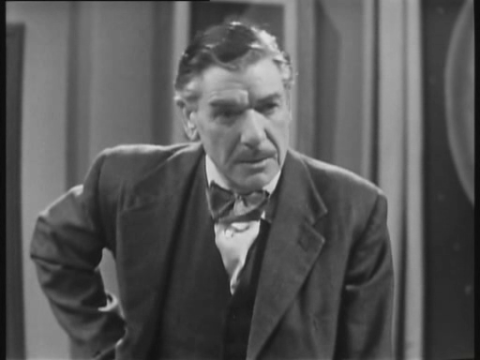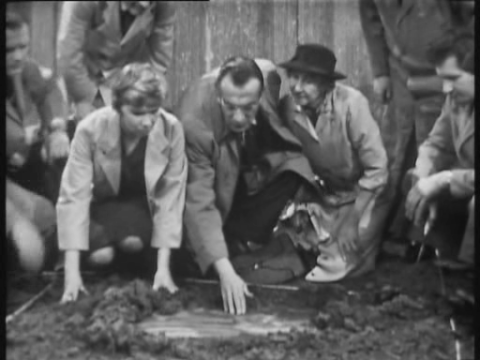Television in its early days was essentially a live medium. Almost everything was broadcast immediately, in the same moment it was created, and that was just as true for drama series as for news or comedy shows, for example. This had several practical implications. Techniques had to be invented for changing scenes quickly and effectively, especially if the characters had to change clothes or environment. It also meant that everything had to be extremely well rehearsed, in a sense much more closely related to the theatre than to film.
Some of the best television in the 1950s was produced in Britain by the BBC. Among other things, they broadcast a number of very good science fiction series with the somewhat unique hero Professor Quatermass.
Quatermass and the Pit (episodes 1, 2, 3, 4, 5, 6) was the third and final Quatermass series, and arguably the best (the first, The Quatermass Experiment (1953), is only partially preserved today). It had a higher budget than the previous two series, which can be clearly seen in the scenography, and it used pre-filmed material interspersed with the live action.
In Quatermass and the Pit, construction workers discover the remains of prehistoric humans in London. Later at the same site, they also find what at first is assumed to be an undetonated World War II bomb, but it appears to be made of a substance that is harder and more durable than anything previously known. Professor Q. advances the hypothesis that perhaps the artefact is not of earthly origin, but some refuse to believe that this is possible.
Quatermass and the Pit was made at a time when science fiction could not rely on cool special effects, especially not in a live TV series. Instead, it had to use aspects such as interesting characters, good dialogue and an intelligent story, things seen far too rarely in modern sci-fi. The series also delivers some interesting commentary on its contemporary society, some of which is still very relevant, for instance the gap between politics and science, and the tension between racial groups.
Professor Q. is a nicely developed character, and a type rarely seen on film. He is a scientist who, unlike Indiana Jones, relies on his brain rather than his muscles. In some moments, he reminds a bit about Sherlock Holmes, but where Holmes tends to use spectacular chains of reasoning, Quatermass relies more upon observable evidence and scientific method. Today’s popular media could use more heroes like that.
For many, Quatermass and the Pit is perhaps best known as the 1967 remake by Hammer Films, but that film has totally different qualities. The budget for special effects was higher, of course, and the whole story was condensed to about half the length, driving up the tempo and cutting out many subplots entirely. Both are good, but the original would be my first choice.
This film is best enjoyed if you want some quality science fiction with a good story and good actors.
Quatermass and the Pit
Download links: 1 | 2 | 3 | 4 | 5 | 6
Year: 1958
Running time: 2 h 58 min
Director: Rudolph Cartier
Stars: André Morell
Image quality: Acceptable
Resolution: Medium (512×384)
Sound quality: Acceptable
Best file format: Cinepack

